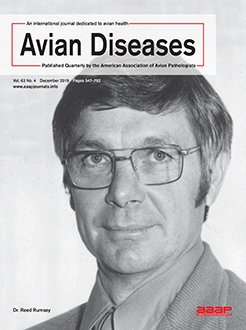Intestinal inflammation may provide a growth advantage for Salmonella and enhance its systemic spread in chickens. Salmonella triggers intestinal inflammation in the host by using type III secretion systems (T3SS) and produces the inflammatory end product tetrathionate. In mice, tetrathionate respiration confers a growth advantage for Salmonella Typhimurium over the competitive microbiome in the inflamed intestine. Coccidia also promote intestinal inflammation and enhance Salmonella intestinal growth and systemic spread in chickens. The objective of this study was to evaluate the contribution of inflammation, induced by Eimeria spp. or Salmonella Typhimurium, to Salmonella colonization and dissemination in chickens. In addition, the fitness costs associated with defects in tetrathionate reductase and T3SS associated with Salmonella Pathogenicity Island 1 or 2 (SPI-1 or SPI-2) were evaluated in in vivo competition experiments with wild-type Salmonella strain, with or without Eimeria coinfection. One-day-old specific-pathogen-free chickens were orally inoculated with a sham inoculum or with 4 × 102Eimeria oocysts cocktail of Eimeria tenella, Eimeria acervulina, Eimeria maxima, and Eimeria mitis. At 6 days of age, birds were orally administered a 1:1 ratio of Salmonella Typhimurium wild-type and mutant deficient in tetrathionate reductase, SPI-1, or SPI-2 (108 colony forming units/bird). Ceca, livers, and drumsticks were collected at 3, 7, 14, and 42 days after Salmonella infection, for bacteriology. Intestinal inflammation was scored by histology. Significantly higher intestinal inflammation was observed in challenge groups compared with the control. However, there were no significant differences in intestinal inflammation scores between groups coinfected with both Eimeria spp. and Salmonella Typhimurium and birds infected with Salmonella alone, and Eimeria coinfection did not increase Salmonella prevalence or abundance. Contrary to mouse studies, tetrathionate reductase did not enhance Salmonella Typhimurium cecal colonization or systemic spread in chickens. SPI-1 and SPI-2 played a significant role in Salmonella dissemination and cecal colonization in chickens, respectively.
How to translate text using browser tools
27 June 2019
The Contribution of Eimeria Coinfection and Intestinal Inflammation to Cecal Colonization and Systemic Spread of Salmonella Typhimurium Deficient in Tetrathionate Reductase or Type III Secretion Systems Salmonella Pathogenicity Island 1 or 2
Claire-Sophie Rimet,
John J. Maurer,
Roy D. Berghaus,
Brian J. Jordan,
Luciana Helena Antoniassi da Silva,
Lisa J. Stabler,
Kasey K. Johnson,
Laura R. Tensa,
Karen M. Segovia,
Monique S. França
ACCESS THE FULL ARTICLE

Avian Diseases
Vol. 63 • No. 4
December 2019
Vol. 63 • No. 4
December 2019
Eimeria
intestinal inflammation
Salmonella Pathogenicity Island 1 (SPI-1)
Salmonella Pathogenicity Island 2 (SPI-2)
Salmonella typhimurium
tetrathionate reductase




